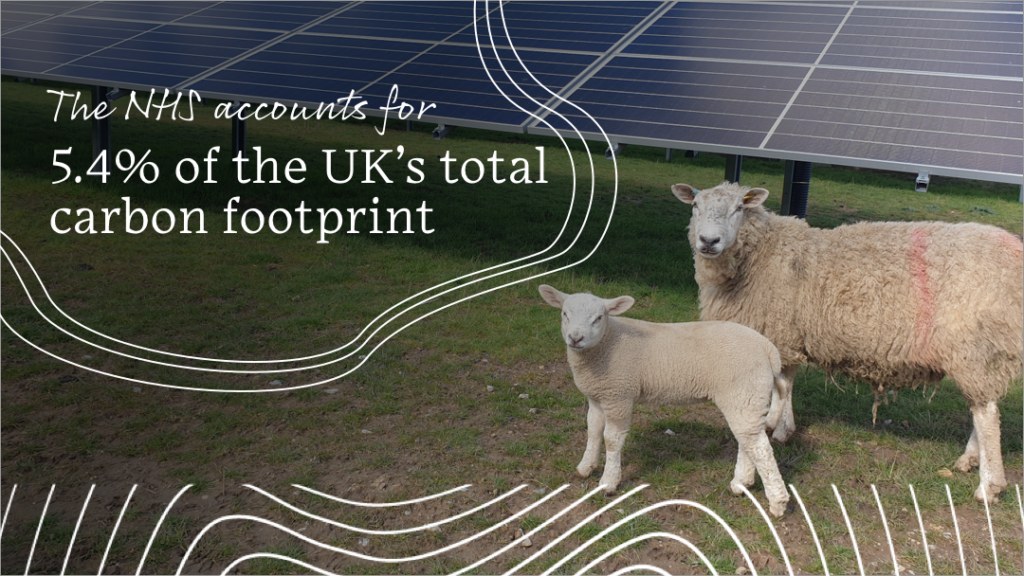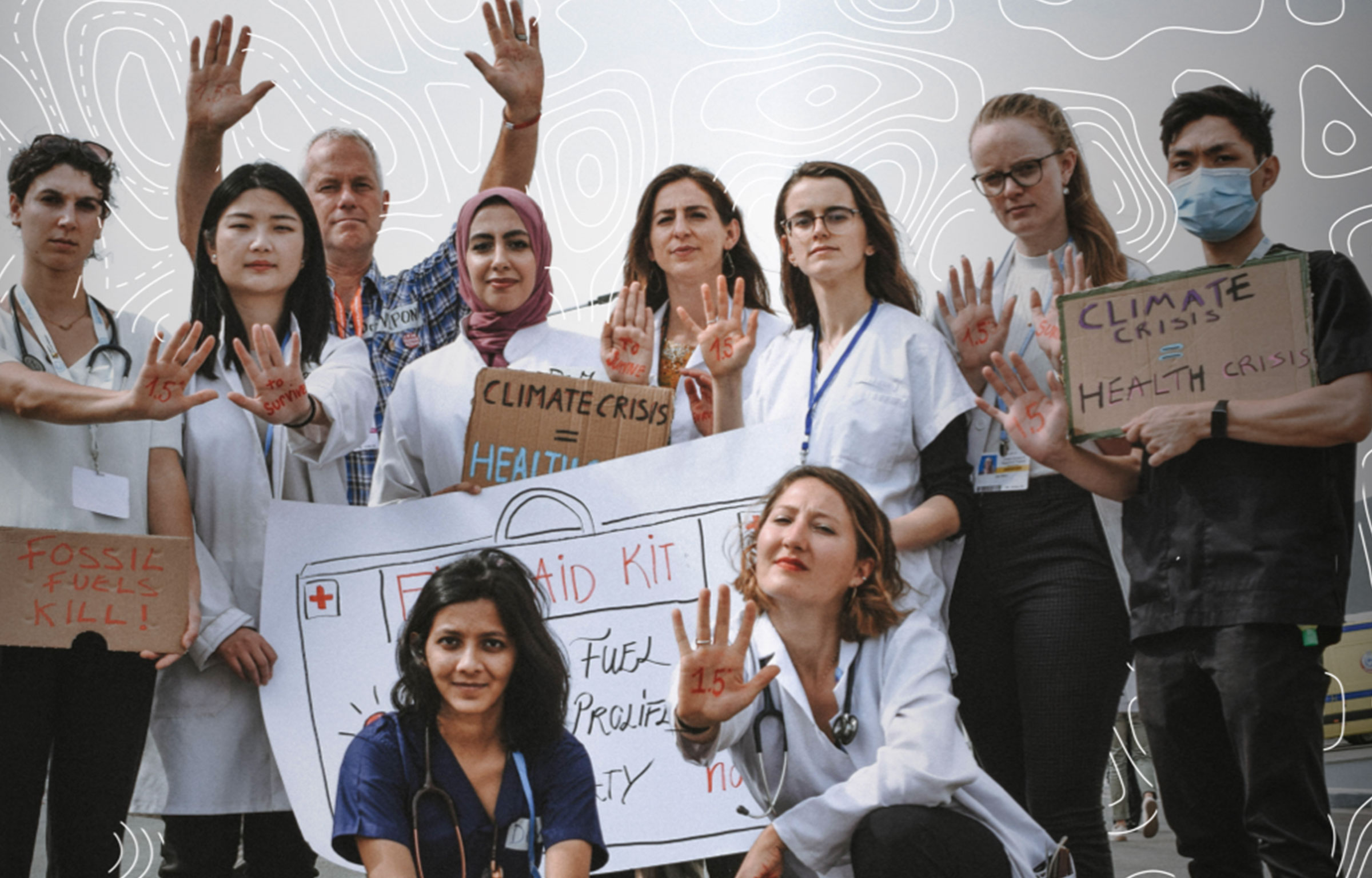The hidden footprint of hospitals
PRESENTED BY FORECASTING HEALTHY FUTURES
AS PART OF THE CLIMATE AND US SERIES
The following article is part of the Climate and Us series, produced by the BBC StoryWorks Commercial Productions in partnership with GCHA.
Climate change is the largest risk to human health, according to the WHO – but the health services that care for us also contribute to climate change. Can health services reduce their environmental and health impact?
In 2020, the UK’s National Health Service (NHS) launched the Greener NHS programme, in a bid to become the first health service in the world to reach “carbon net zero”. Hospitals and trusts across the UK are committing to making their care more sustainable in new and innovative ways, and other countries are following their lead.
The NHS defines net zero as nullifying the full scope of emissions the health service is responsible for. These include Scope 1, or direct emissions, and Scopes 2 and 3, or indirect emissions which are created by, for example, transporting goods or generating energy. The health service is now expanding its definition to include additional emissions which result from things that fall outside of these scopes – like the emissions that come from patients travelling to hospitals.
There is good reason for the NHS to make a net zero commitment – the service accounts for 5.4% of the UK’s total carbon footprint. Transport makes up a significant portion of the NHS’s emissions – with nearly 3.5% (or 9.5 billion miles annually) of all road travel in England related to patients, visitors, staff and suppliers to the NHS.
“The NHS was founded on the idea that the climate was stable, and now it isn’t, so we need to make some changes,” says Nick Watts, the NHS’s chief sustainability officer, adding that the aim is not only to reduce the impact of the service but also to improve patient care.

Through the energy used to power hospitals, fuel ambulances, rapid response units, the medicines purchased, the medical devices used and all the equipment, personal protective equipment (PPE) and instruments required to carry out the work, the NHS accounts for roughly the same level of emissions made by a country the size of Croatia.
There are a range of changes being made. Anaesthetic gases, for example, are used daily in surgeries, and the most common is desflurane – but it’s also one of the most environmentally harmful. For example, using a single bottle containing 240ml of desflurane has the same climate effect as burning 440kg of coal, producing 886kg of carbon dioxide. So, practitioners at the University Hospitals Bristol and Weston NHS Foundation Trust started using alternative gases, resulting in the use of desflurane plummeting from about 20% to just below 2%.
The NHS was founded on the idea that the climate was stable, and now it isn’t — Nick Watts
At Hull University Teaching Hospitals NHS Trust, Marc Beaumont, head of sustainability, explains how they will try to meet their ambitious target of being net zero by 2030 – using solar panels to generate power off grid, reducing anaesthetic gas use, increasing the fleet of zero emission vehicles, and working on zero waste to landfill.
In just 12 months, the 11,000 solar panels that span over two local fields have generated over 4.5 million kW hours of energy, which is enough to power roughly 400 homes. They’ve picked up some unusual but popular helping hands to help maintain the solar panel fields too – sheep help to keep the field closely mown.

A team at University Hospitals Birmingham, headed by consultant surgeon and senior lecturer at the University of Birmingham Aneel Bhangu, attempted the world’s first net zero carbon operation in Solihull Hospital in May 2022. The aim was to reduce or offset Scope 1, 2 and 3 emissions and those of the patients, while also improving the quality of care.
By using reusable gowns and masks, giving anaesthetic through veins rather than using gases, minimising electricity use, including heating and lighting, recycling of single-use equipment used in surgery, using individually packed equipment, and only opening items as they were required as well as consultant surgeons jogging and cycling to the hospital, the team estimated that the reduction in carbon output for the operation was reduced by almost 80% – the equivalent to a diesel car travelling around 5,500 miles. The remaining output was offset through a variety of projects, including the planting of trees on the grounds of Solihull Hospital.
Bhangu says the operation proved that it is possible to reduce emissions in healthcare while maintaining the same high standards of care, and is optimistic that care can be improved in future using these methods.
The World Health Organization (WHO) makes no recommendations at present on reusable drapes and gowns, because there’s no evidence to support that they reduce emissions, according to Bhangu. But the team are working with health professionals around the world to learn how it’ll affect NHS practices.
“We’ve established research networks funded by the National Institute of Health Research UK in India, Ghana, Nigeria, Rwanda, Benin and Mexico,” Bhangu says. “In the NHS, we’ve ended up in this disposable environment, whereas in the Global South, there’s a lot more reuse of equipment and far less plastic packaging. So there are some bilateral lessons to learn around the world.”
Many other countries are also implementing decarbonisation strategies. “We need change in the health curricula for the health professionals and systems to become resilient,” says Milena Sergeeva, the Liaison Officer for Latin America and the Caribbean for the Global Climate and Health Alliance.
Sergeeva sees a lot of overlapping issues across the regions she works with in the Global South. “There are huge levels of inequity, political instability and economic crises in these regions,” she says. “Pair this with the impacts of climate change events, they can very quickly become devastated. [If] developing countries like these see climate impacts and prepare for them, [it] enables them to become resilient, their economics to become stronger and health to improve,” says Sergeeva.
For example, Argentina was the first government worldwide to include reducing greenhouse gas emissions from the health care sector in its Nationally Determined Contribution (NDC), Colombia partnered with the Pan American Health Organization to report on the health benefits of climate action, and Perú has set its target to meet the WHO’s Alliance for Transformative Action on Climate and Health to be net zero target by 2050.
Bhangu believes this is just the beginning of the NHS’s journey in more sustainable healthcare. “A lot of people focus on carbon reduction, but I focus on the environment,” he says. “It’s also about the plastic waste that goes into the ground and the seas, the drugs that flow out into the water supply. It’s about more than just carbon, we must remember that.”
Anu Mitra is a consultant in emergency medicine and part of the multidisciplinary team leading a project to reduce the need for cannulation at Charing Cross Hospital, London. Cannulation – the small plastic instrument inserted into the back of a patient’s hand to receive intravenous elements such as medication or for taking blood – is one of the most common interventions made in the emergency department. But more than 1.4% of the NHS’s emissions from their supply chain come from single-use plastics like these.
It’s about more than just carbon, we must remember that — Anu Mitra
“To kick off the project, we did an initial audit of our patients and found that 75% of them had had a cannula inserted,” Mitra says. “But when we looked into it further, we found that 44% of cannulas we inserted were actually never used for anything more than drawing blood –- which we can do without one. We see on average 170 patients a day, meaning roughly 60 of them had a cannula inserted that was disposed of but never used.”
Over the first 12 months of the project, results saw a reduction in associated carbon of around 19,000 kg CO2e with a cost saving of around £95,000 just through implementing 40 fewer cannulations a day, because those cannula were not required.
“This project was important to get right because, once a cannula is used, it has to be incinerated [because this is the standard way to dispose of contaminated medical waste],” Mitra explains. “We worked out that the overall emissions for a single cannula use equated to 1.1kg, which is colossal considering they only weigh 66g.”
These might sound like small savings, but they add up, says Mitra.




